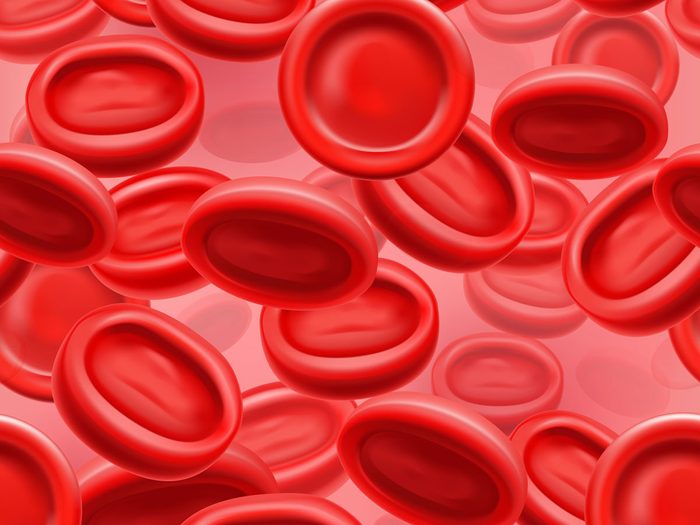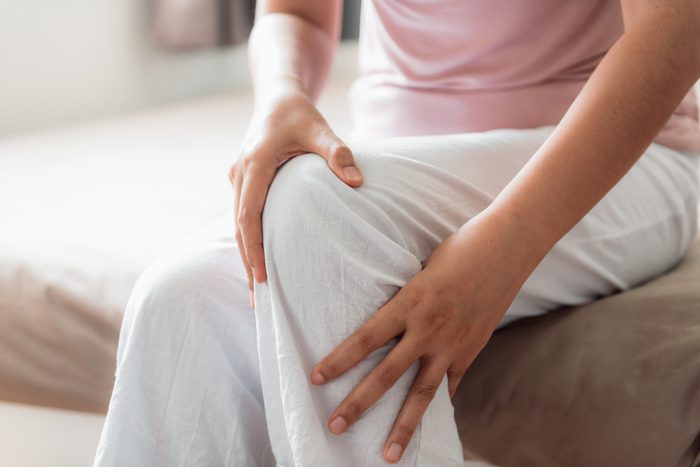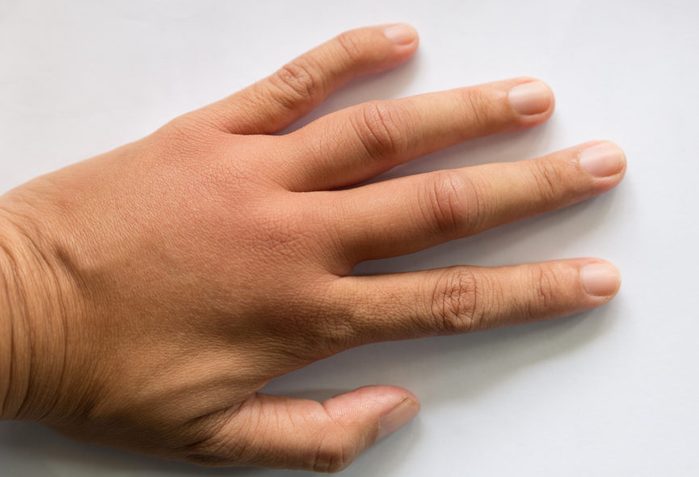
What is a blood clot?
Blood clots normally form after an injury to protect your body from losing too much blood. But they can also form in an artery or vein even if there is no obvious injury, according to the American Society of Hematology (ASH). Complications can occur if it doesn’t dissolve naturally or if you don’t get treatment. Keep in mind that the signs and symptoms of a blood clot differ depending on where it is in the body—the heart, brain, arm, leg, lung, or abdomen. (Note: Some of these symptoms are common in other health issues, so always consult with your doctor.)

Leg cramps
People who have experienced a blood clot in the leg say they’ve felt cramps or pain similar to a charley horse. Leg aching, pain, and cramping can be the result of deep vein thrombosis (DVT), a blood clot that forms in a major vein, often in the lower limbs. They can develop slowly or appear suddenly, specifically after prolonged time in a sitting or cramped position, like on a long-distance flight. “Ignoring a blood clot in the leg for even a day can end up in a pulmonary embolism, which is much more dangerous,” according to Kristine Arthur, MD, an internist at Orange Coast Memorial Medical Center in Fountain Valley, California. A pulmonary embolism can occur if a portion of the clot in the legs breaks off and travels to the lungs. About one in three people with DVT will have a pulmonary embolism, which is a medical emergency that can be life threatening.

Discoloured skin
A blood clot disrupts normal blood flow, and can result in discoloured skin, which is a common blood clot symptom. If an area of one leg appears to be red or has a different colour in any way, a blood clot is one possible cause. This symptom should be checked by your doctor, according to the Centers for Disease Control and Prevention (CDC).
(Psst: Here’s what Canadian doctors wish they could say to their patients.)

Skin is warm to the touch
Another common blood clot symptom is a variation in temperature where the clot is suspected. Much like the discolouration, this is caused by a disruption of blood flow. If this temperature variation continues and you have a history of increased risk of blood clots, call your doctor. Usually, these three symptoms appear together: warm skin, leg cramps, and discoloured skin.

Swelling
Swelling in the arm, hand, foot, ankle, or leg is one of the most common signs of a blood clot, according to the CDC. (Read about one woman’s near-death experience from a blood clot at the age of 38.)

Back pain
Back pain might not seem like one of the likely blood clot symptoms, but it can be an indication that a blood clot is present in the pelvic area or in the inferior vena cava, which is the major abdominal vein. According to the American College of Cardiology, 2.6 to 4 percent of people with DVT have inferior vena cava thrombosis. Although this symptom seems to be more rare, these types of clots can result in permanent damage if not treated, as they cut off blood to the extremities. If you experience this along with other blood clot symptoms, contact your doctor. The most common causes of low back pain, however, are typically not blood clots.

Excessive sweating
When paired with other symptoms, excessive sweating can be one of the blood clot symptoms you shouldn’t ignore, according to the ASH. These are very serious types of blood clots in either the lungs or heart that should be treated immediately.

Shortness of breath
A pulmonary embolism can cause symptoms like shortness of breath, difficulty breathing, and chest pain. In some cases, people with a pulmonary embolism may have a drop in blood pressure and pass out, or they may even cough up blood.
These symptoms are a medical emergency, but any clot symptoms should be taken seriously and investigated by your doctor. In addition to prolonged sitting, other risk factors for DVT and clot formation are injuries, including fractures and major surgery; chronic conditions, like heart and lung disease; confinement to a bed; pregnancy; and hormone use, such as birth control pills, according to the CDC.
Medically reviewed by Oscar H. Cingolani, MD.
Next, find out which foods can help lower blood pressure naturally.
